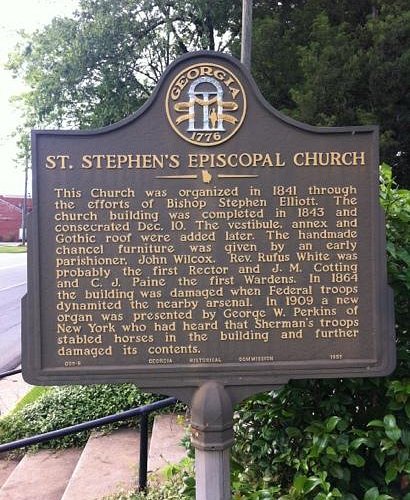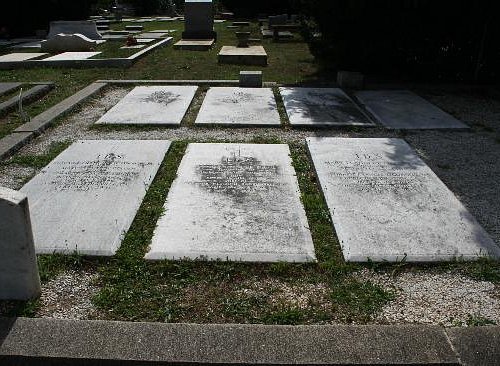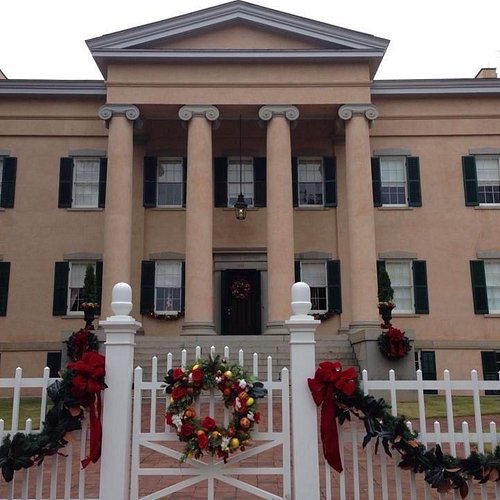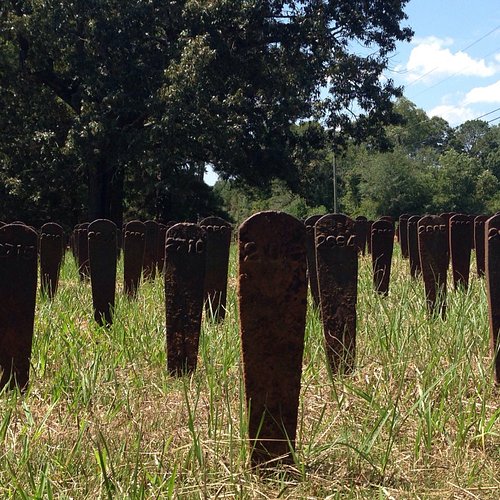Top 5 Sights & Landmarks in Milledgeville, Georgia (GA)
Milledgeville is a city in and the county seat of Baldwin County in the U.S. state of Georgia. It is northeast of Macon and bordered on the east by the Oconee River. The rapid current of the river here made this an attractive location to build a city. It was the capital of Georgia from 1804 to 1868, notably during the American Civil War. Milledgeville was preceded as the capital city by Louisville and was succeeded by Atlanta, the current capital. Today U.S. Highway 441 connects Milledgeville to Madison, Athens, and Dublin.
Restaurants in Milledgeville
1. St. Stephen's Episcopal Church
2. Memorial Hill Cemetery
3. Georgia's Old Governor's Mansion
Overall Ratings
4.5 based on 115 reviews
Completed in 1839, Georgia's Old Governor's Mansion is one of the finest examples of High Greek Revival architecture in the nation. Designed by noted architect Charles Clusky, an Irish immigrant and built by Timothy Porter of Farmington, Connecticut, the Mansion looms over Milledgeville with its stately columns and imposing facade. Serving as the residence for Georgia's chief executives for over thirty years, the Mansion's history encompasses the antebellum, Civil War, and early Reconstruction phases of the state's history. Such noted state leaders as George Crawford, Howell Cobb and Joseph E. Brown resided in the building and used it as a stage for speeches and also to introduce guests of national standing. Georgia's Old Governor’s Mansion also served as a stage on which many elements of the complex social issues of the antebellum period were played out. Slavery and the complexity of society and gender roles are among the issues that shape the history of the building and are explored in tandem with the issues of politics. During the Civil War, the Mansion was claimed as a "prize" in the "March to the Sea," when General William T. Sherman headquartered in the building on November 23, 1864. Following the war, Georgia's seat of government was relocated to Atlanta, and the Mansion was abandoned. Given over to Georgia Normal & Industrial College (currently known as Georgia College) in 1889, the Mansion served as the founding building of the institution and is the campus's most treasured structure. Beginning in the late 1990s, an initiative was begun to return the Mansion to its antebellum splendor. Following five years of intensive historical, structural and material research, Georgia's Old Governor's Mansion began its long awaited historic restoration in November of 2001. Funded through the Georgia General Assembly and a generous grant from the Woodruff Foundation, over three years of painstaking work has restored the original layout, coloration, lighting and appearance of the building. Georgia's Old Governor's Mansion now serves as an historic house museum whose mission is to care for, collect, interpret and exhibit items (including artifacts, structures, and gardens) that illustrate the history of the site and its inhabitants during the years the Mansion was the official residence of Georgia’s governors (1839-1868). Tours focus on the history of the building, its occupants both free and enslaved, and the myriad complexities of Antebellum society in Georgia and its history. Georgia's Old Governor’s Mansion was designated a National Historic Landmark in 1973 and is an accredited museum of the American Alliance of Museums. In 2015, the Mansion was named an affiliate of the Smithsonian Institution.
Reviewed By ieoknow
Beautifully restored and bursting with original and period furniture and furnishings. Our tour guide/docent, Noah, was very informative and entertaining. We spent a delightful hour or so. Then upon leaving we got more information on the area and great hints for dinner. I recommend this historic tour.
4. Cedar Lane Cemetery
Overall Ratings
4.5 based on 10 reviews
Reviewed By 726edgart
Upon reading of the history and purpose of the steel markers bearing only numbers I was horrified to learn that these were only a small number from the originals. They represented each patient that died while in State Custody for mental health needs.Many years ago the grounds keepers removed them as it made it easier to CUT GRASS. They were discarded and laid for years as they continued to rust. These patients just as their markers have been lost to history and ignorance! God Forgive Us and our State Leaders!
5. Flannery O'Connor Memorial Room
Overall Ratings
3.5 based on 6 reviews
This memorial to author Flannery O'Connor is located in the Ina Dillard Russell Library at Georgia State University.




